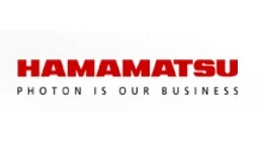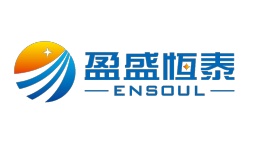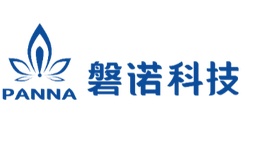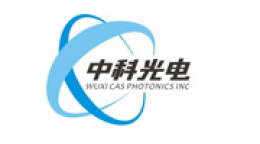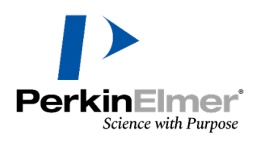方案详情文
智能文字提取功能测试中
HAMAMATSUPHOT O NNIISO URBUSINESS 滨松红外气体分析光电探测解决方案 不同分子的气体都有其固定的、独有的特征吸收峰,我们根据这些吸收峰的位置进行识别,从而分辨出是哪种气体以及浓度大小,这些吸收峰我们也称之为“分子的指纹峰”。对 3u m~10 u m 波段的中红外光有吸收特性的污染物们,通过光学的方法就快速地被监测到。利用中红外光指纹峰来判断气体的种类和浓度,已经广泛地应用于气体中氮氧化物和硫氧化物的测定。完成一套探测系统,光源和探测器都是必要的,滨松可同时提供用于红外气体分析法的两个重要器件:量子级联激光器和 InAsSb 光伏探测器。 光源:量子级联激光器 一般的半导体激光器,如果在数百 nm 中有多个波长发生震动时,光谱带宽变宽,受到多种气体的干扰,测量精度下降。而QCL 采用的是 DFB(分布式反馈激光器)结构,在内部设置了衍射光栅,J,可使光谱带宽非常狭小的单一波长振动。 如今具有内置准直透镜的新产品,从激光芯片射出的光的范围变得更宽,因此与之前的产品相比,客户在设计光学系统时,无需再为激光通过对象物而改变光的形状。以往没有准直镜的 QCL 产品需要客户自己调整光轴。中红外光是不可见光,无论是在光学材料还是特殊的光学系统设计上都是相当花时间的。在QCL 封装外部设置透镜的话,因为没有大小的要求,所以是比较容易对准的。但是,若是内置透镜,就需要在狭小的封装空间内,与光轴完成高精度的对准以及固定。同时还必须考虑因光光材料的反射产生的噪音的影响。 ( 目前的滨松 QCL 产品有连续波型和脉冲型,覆盖了4um~10 um 波段,接下来也将涉及10um 附近的探测器的开发。 ) DFB-直流型 DFB-脉冲型 脉冲型量子级联激光器模块 Type No. Wavelength*1 Operating temperature (QCL)* Line width*s Tunable range* Output power Thresholdcurrent Side-modesuppression ratio (SMSR) Typ. Min. Max. Max. Min. Min. Max. Min. L12004-2310H-C 4.33 pm +10°C +50 °C 0.2cm-1*5 ±1.0 cm 20 mW 1.0 A 25 dB Condition: K=2310 cm16 Condition: Top(qcl)=20 °C L12004-2209H-C 4.53 pm +10 °C +50 °C 0.2 cm-1*5 ±1.0 cm* 20 mW 1.0 A 25 dB Condition: K=2209 cm-116 Condition: Top(qcl)=20 °℃ L12004-2190H-C 4.57 pm +10°C +50 °C 0.2 cm-1*5 ±1.0 cm° 20 mW 1.0 A 25 dB Condition: K=2109 cm-1+6 Condition: Top(qcl)=20 °C L12005-1900H-C 5.26 pm +10°C +50°C 0.2 cm--1*5 ±1.0 cm 20 mW 1.0 A 25 dB Condition: K=1900 cm1*6 Condition: Top(qcl)=20 °C L12006-1631H-C 6.13 pm +10 °C +50 °C 0.2 cm-1*5 ±1.0 cm 20 mW 1.0 A 25 dB Condition: K=1631 cm-1*6 Condition: Tc Top(qel)=20 °C L12007-1392H-C 7.18 pm +10 °C +50°C 0.2 cm-1*5 ±1.0 cm 20 mW 1.0A 25 dB Condition: K=1392 cm-1*6 Condition: T Top(qcl)=20 °C L12007-1354H-C 7.39 pm +10 °C +50°C 0.2 cm-1*5 ±1.0 cm 20 mW 1.0 A 25 dB Condition: K=1354 cm-1*6 Condition: Top(qcl)=20 °C L12007-1294H-C 7.73 pm +10 °C +50 °C 0.2 cm-1*5 ±1.0 cm 20 mW 1.0 A 25 dB Condition: K=1294 cm-1*6 Condition: Top(qcl)=20°C *1: Please contact a Hamamatsu sales office about QCLs with emission wavelengths not listed above. *2: This specifies the temperature range within which the target emission wavenumber (K) can be realized. *3: Full-width half maximum ( * 4: T h i s s p e c if i es t h e co n tin u o us tu na b l e ra n g e ( witho u t m od e ho p p in g ) . T h e c e n t e r w a v e n um ber o f th e t un i n g r a n g e is t h e e m i s s io n wa v en um b e r (K) . ) ( * 5 : T h e f igures a re l i mite d b y t he r esolution an d s ignal /n o i s e ra ti o of t h e m e asu rin g i n s t r u m ent s us e d . ) ( * 6 : K: E missi o n w a v e n um be r ( c m ) ) Standard driving conditions: tw=50 ns, fr=200 kHz, Top(qd)=20C Type No. Wavelength* Operating temperature (QCL)* Line width* Tunable range** Pulsed outputpower Thresholdcurrent Side-mode suppression ratio(SMSR) Typ. Min. Max. Max. Min. Min. Max. Min. L12014-2231T-C 4.48 pm -10 °C +50 °C 0.2 cm-1*5 ±1.0 cm 50 mW 1.5 A 25 dB Condition: K=2231 cm-1*6 L12015-1901T-C 5.26 pm -10°C +50 °C 0.2 cm1*5 ±1.0 cm- 50 mW 1.5 A 25 dB Condition: K=1901 cm-1*6 L12016-1630T-C 6.13 pm -10 °C +50°C 0.2cm1*5 ±1.0 cm 50 mW 1.5 A 25 dB Condition: K=1630 cm" 6 L12017-1278T-C 7.82 pm -10 °C +50 °C 0.2 cm15 ±1.0 cm 50 mW 1.5 A 25 dB Condition: K=1278 cm-1*6 L12020-0993T-C 10.07 pm -10°C +50 °C 0.2cm1*5 ±1.0 cm 50 mW 1.5 A 25 dB Condition: K=993 cm16 *1: Please contact a Hamamatsu sales office about QCLs with emission wavelengths not listed above. *2: This specifies the temperature range within which the target emission wavenumber (K) can be realized. *3: Full-width half maximum *4: This specifies the continuous tunable range (without mode hopping). The center wavenumber of the tuning range is the emission wavenumber (K). *5: The figures are linmi1ted by the resolution and signal/noise ratio of the measuring instruments used. *6:K: Emission wavenumber (cm) Type No. Wavelength** Operating* temperature(QCL) Line width* Tunable*+range Outputpower Thresholdcurrent Side-modesuppression ratio(SMSR) *5*6Beamspread angle *5*7Beam waist location *5*8width of beam at waist Typ. Min. Max. Max. Min. Min. Max. Min. Typ. Min. Max. Typ. L12004-2190H-E 4.57 pm +10°C +50 °C 0.2 cm9 ±1.0 cm-1 20 mW 1.0 A 25 dB 3 mrad 50 mm 1000 mm 1.5mm Condition: K=2190 ccmm-"1*10 Condition: Top(qcl)=20°C *1: Please contact a Hamamatsu sales office about QCLs with emission wavelengths not listed above. D1Typical beam profile*2: This specifies the temperature range within which the target emission wavenumber (K) can be realized.*3: Full-width half maximum Z=1000mm *4: This specifies the continuous tunable range (without mode hopping). The center wavenumber of the tuning range is theemission wavenumber (K). *5: This product has individual difference. Confirm date sheet attached to a product. *6: Half angle beam spread from the perpendicular (Fast) direction (perpendicular to pins) or horizontal (Slow) direction(parallel to pins), whichever is wider. *7: From package top surface *8: 1/ebeam radius *9: The figures are limited by the resolution and signal/noise ratio of the measuring instruments used. *10: K: Emission wavenumber (cm) 探测器: InAsSb光伏探测器 目前常见的污染气体主要集中在4um~10 um内,因此我们有必要将探测器的波长范围扩展到11 u m附近,从而完成对绝大多数常见污染气体的高灵敏度、高精度的探测。 此前,在中红外气体探测中主要采用的是的镉汞(MCT)红外探测器。但因为该探测器中含有 RoHS指令所限制的水银和镉,所以基本已被市场拒之门外。新型的环境友好的 InAsSb 光伏探测器成为新的选择。 对于中红外波段的探测而言,钢砷锑(InAsSb)材料的探测器在室温下也具有很高的探测效率,且响应快速。滨松公司通过自有的薄膜结晶成长技术,生长出出几乎无缺陷的薄膜,将光谱响应范围从 8um稳定延伸至11um。10um 波长附近的氨气(NH3)、臭氧(03)等分子也都进入了探测范围。实现了单个探测器对多种成分的分析。 此外,新系列 InAsSb 探测器实现了非制冷、高灵敏度特性的并存,以此可进一步推进分析设备的小型化、低功率。 P13894-011MA(非制冷型) (Td=25C) 受光面尺寸 1×1 mm 截止波长 11.0 um 探测灵敏度 6.5×10cm·Hz1/2/W 上升时间 3 nsec P13894-211MA(制冷型) (Td=-30℃) 受光面尺寸 1×1mm 截止波长 10.2 um 探测灵敏度 3.2×108cm·Hz1/2/W 上升时间 3 nsec Parameter Symbol Condition P13894-011MA P13894-211MA Unit Min. Typ. Max. Min. Typ. Max. Peak sensitivitywavelength Ap - 5.6 - - 5.6 - um Cutoff wavelength Xc 9.7 11.0 - 8.9 10.2 - um Photosensitivity 入=Ap 1.3 1.9 - 2.8 3.8 - mA/W Shunt resistance Rsh VR=10mV 1.5 2.0 - 7.5 10.0 - kQ Detectivity D* Op,1200, 1) 3.8×10' 6.5×10' - 1.8×10° 3.2×10° - cmHz2w Noise equivalentpower NEP 入=Ap - 1.5×10 2.6x10 - 3.1×10 5.6×10 W/H1/2 Rise time t 10 to 90%,A=1.55pm* - 3 10 - 3 10 ns *Without liaht innut window 其他系列产品: InAsSb Photovoltaic Detector (3 to 5 pm) P13243 series The P13243 series are photovoltaic type infrared detectors that have achieved high sensitivity inthe spectral band up to 5 pum without cooling using Hamamatsu original crystal growth technol-ogy and process technology. Because it is non-cooled, it is compact and easy to handle. Spectral response (D*) DEElectrical and optical characteristics (Ta=25C) Parameter Symbol Condition Min. Typ. Max. Unit Peak sensitivitywavelength Ap - 3.5 - um Cutoffwavelength Ac 5.0 5.3 - um Photosensitivity 入=入p 4.0 4.5 - mA/W Shuntresistance Rsh VR=10 mV 120 300 - kQ Detectivity D* (Ap, 600, 1) 8.0×10 1.0×10° - cm'Hz2/w Noiseequivalent Dower NEP 入=入p - 7.0×10-11 8.8×10-11 W/Hz1/2 Rise time tr 10 to 90% - 6 12 ns KIRDB0610EB InAsSb Photovoltaic Detector (4 to 8 pm) The P12691-201 is an infrared detector that provides high sensitivity in the 8 pm spectral bandby employing our unique crystal growth technology and back-illuminated structure and by in-tegrating a lens. It has a PN junction that ensures high-speed response and high reliability.Handling is easy because it is a TE-cooled type that uses a TO-8 package. Typical applicationsinclude gas analysis such as NOx, SOx, and H2S. ISpectral response (D*) DEElectrical and optical characteristics (Td=-30C) Parameter Symbol Condition Min. Typ. Max. Unit Peak sensitivitywavelength Ap - 6.7 - pm cutoffwavelength Ac 8.2 8.3 - um Photosensitivity s A=Ap 0.8 1.2 - A/W Shuntresistance Rsh VR=10 mV 13 40 - Detectivity D* (Ap,600,1) 4.0×10 6.0×10° cmHz1/2/w Noise equivalentpower NEP 入=Ap - 1.5×10-11 2.3×10-11 W/Hz1/2 Rise time tr VR=0 V,RL=50 20 to 63% 10 ns KIRDB0592EC InAsSb Photovoltaic Detector (up to 5pm) P11120-201 The P11120-201 is a cooled type infrared detector that provides high sensitivity in the 5 pmspectral band by employing our unique crystal growth technology. It has a PN junction that en-sures high-speed response and high reliability. D* is improved as a result of cooling, enablinghigher-accuracy gas detection. Handling is easy because it is a TE-cooled type that uses a TO-8package. >Electrical and optical characteristics (Td=-30 ℃) Parameter Symbol Condition Min. Typ. Max. Unit Peak sensitivitywavelength Ap 4.0 4.9 - pm Cutoff wavelength Ac 5.6 5.9 um Photosensitivity 入=Ap 0.8 1.6 - A/W Shuntresistance Rsh VR=10 mV 10 13 Detectivity D* (Ap, 600, 1) 3.5×10° 5.0×10° - cm'Hz1/2/w NoiseequivalentDower NEP A=Ap - 1.8×10-11 2.5×10-11 W/Hz1/2 Rise time tr VR=0 V,RL=50 Q0 to 63% - 0.4 us 滨松可同时提供给红外气体分析的探测器和光源,可以更利于产品间的相互评估,从而提高测量设备的性能,缩短开发设备的时间。利用中红外波段 QCL(量子级联激光器)的激光吸收分光是非常新的分析计测技术,:,今后也将以高灵敏度、高分辨率的优势,成为气体分析的选择并得到普及。 产品咨询: ( 北方地区:张工 z sb@hamamatsu.com.cn 18601947094 ) ( 南方地方:周工 zxs@hamamatsu.com.cn 15921898545 ) 气体分析包括气体色谱分析、质量分析,而这些都需要采集样本后带到实验室进行分析。如果通过使用激光的中红外光学法,则实现在线监测。更加实时和便捷,应用范围也更广泛。不同分子的气体都有其固定的、独有的特征吸收峰,我们根据这些吸收峰的位置进行识别,从而分辨出是哪种气体以及浓度大小,这些吸收峰我们也称之为“分子的指纹峰”,利用中红外光指纹峰来判断气体的种类和浓度,已经广泛地应用于气体中氮氧化物和硫氧化物的测定。滨松致力于中红外波段气体的分析,在波段3μm~10μm间,包括甲烷、二氧化碳、一氧化碳、硫氧化物、氮氧化物等许多有害气体都能够通过这种方法被测得。针对有害气体的监测,滨松可提供一套完整的红外气体分析系统。滨松可同时提供给红外气体分析的探测器和光源,可以更利于产品间的相互评估,从而提高测量设备的性能,缩短开发设备的时间。利用中红外波段QCL(量子级联激光器)的激光吸收分光是非常新的分析计测技术,今后也将以高灵敏度、高分辨率的优势,成为气体分析的选择并得到普及。
关闭-
1/5

-
2/5
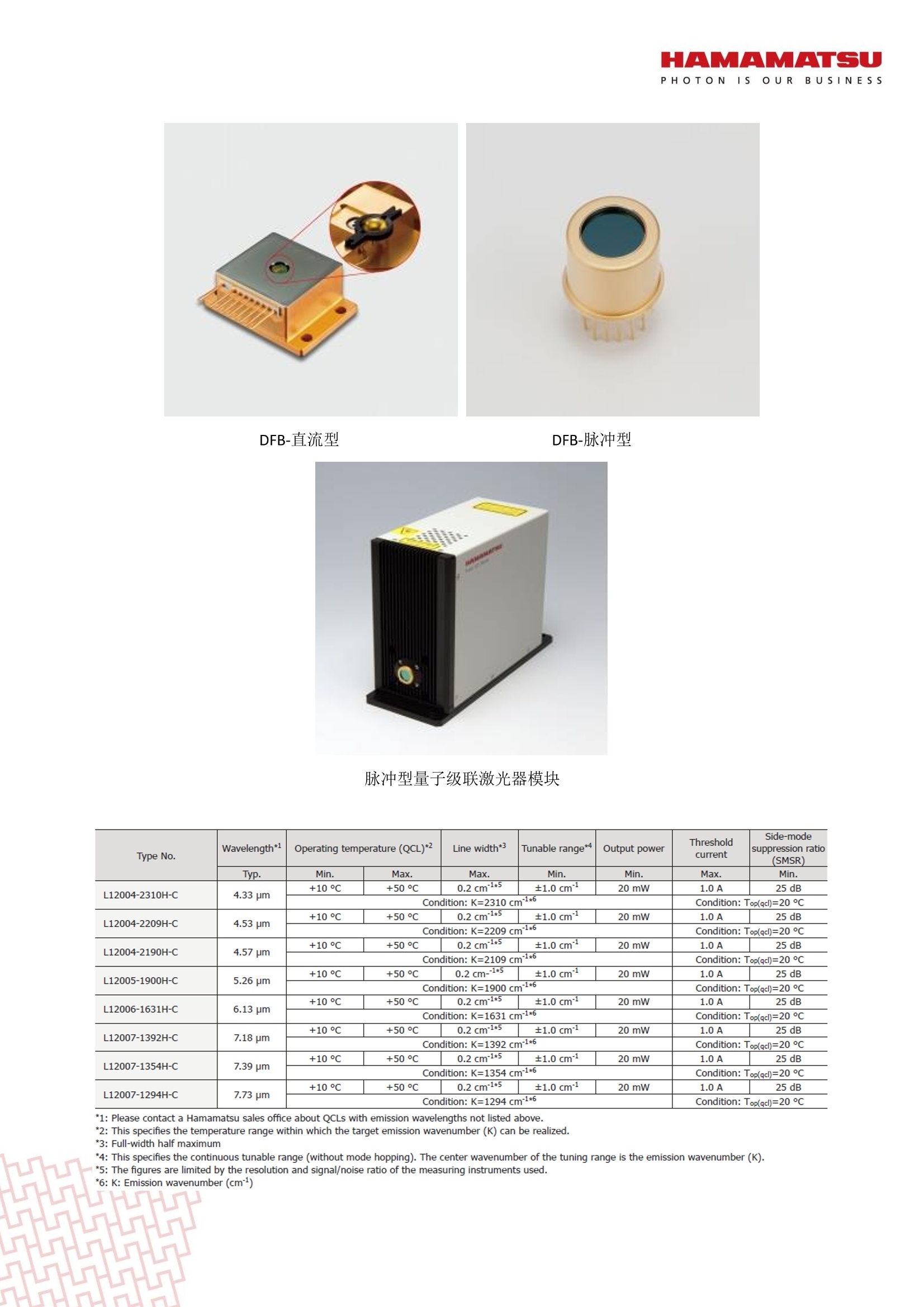
还剩3页未读,是否继续阅读?
继续免费阅读全文产品配置单
滨松光子学商贸(中国)有限公司为您提供《空气中污染气体检测方案(激光产品)》,该方案主要用于空气中分子态无机污染物检测,参考标准《暂无》,《空气中污染气体检测方案(激光产品)》用到的仪器有滨松L12004-2190H-E 量子级联激光器、滨松P12691-201铟砷锑光伏探测器。
我要纠错
推荐专场
气体报警器/气体探测器/气体传感器
更多相关方案


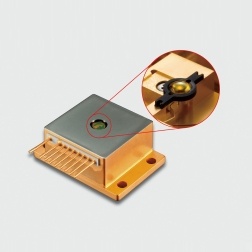
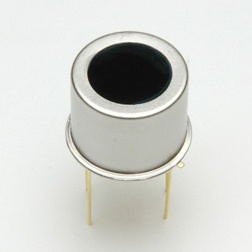



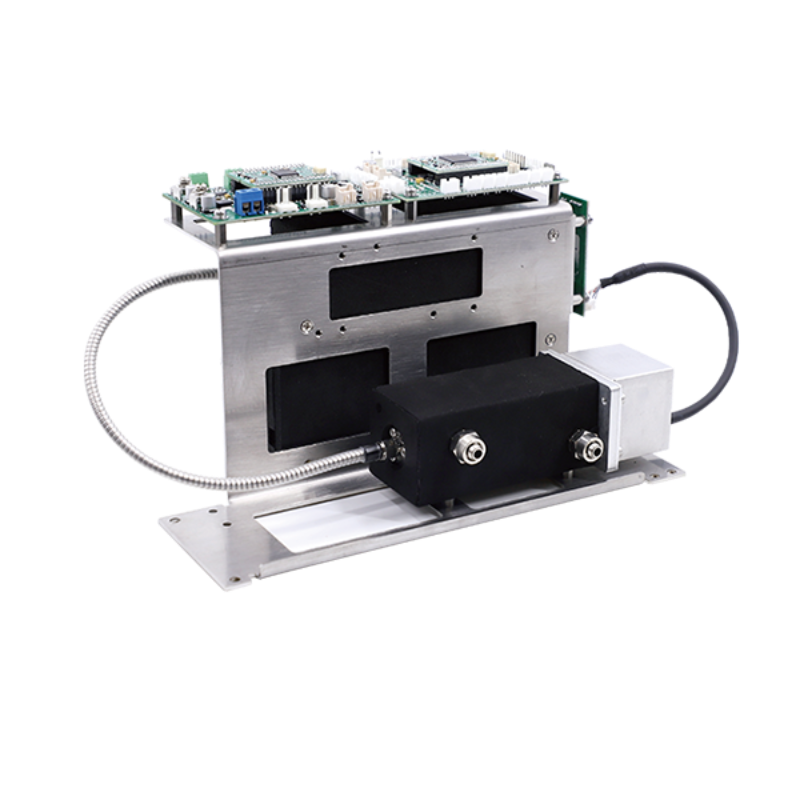

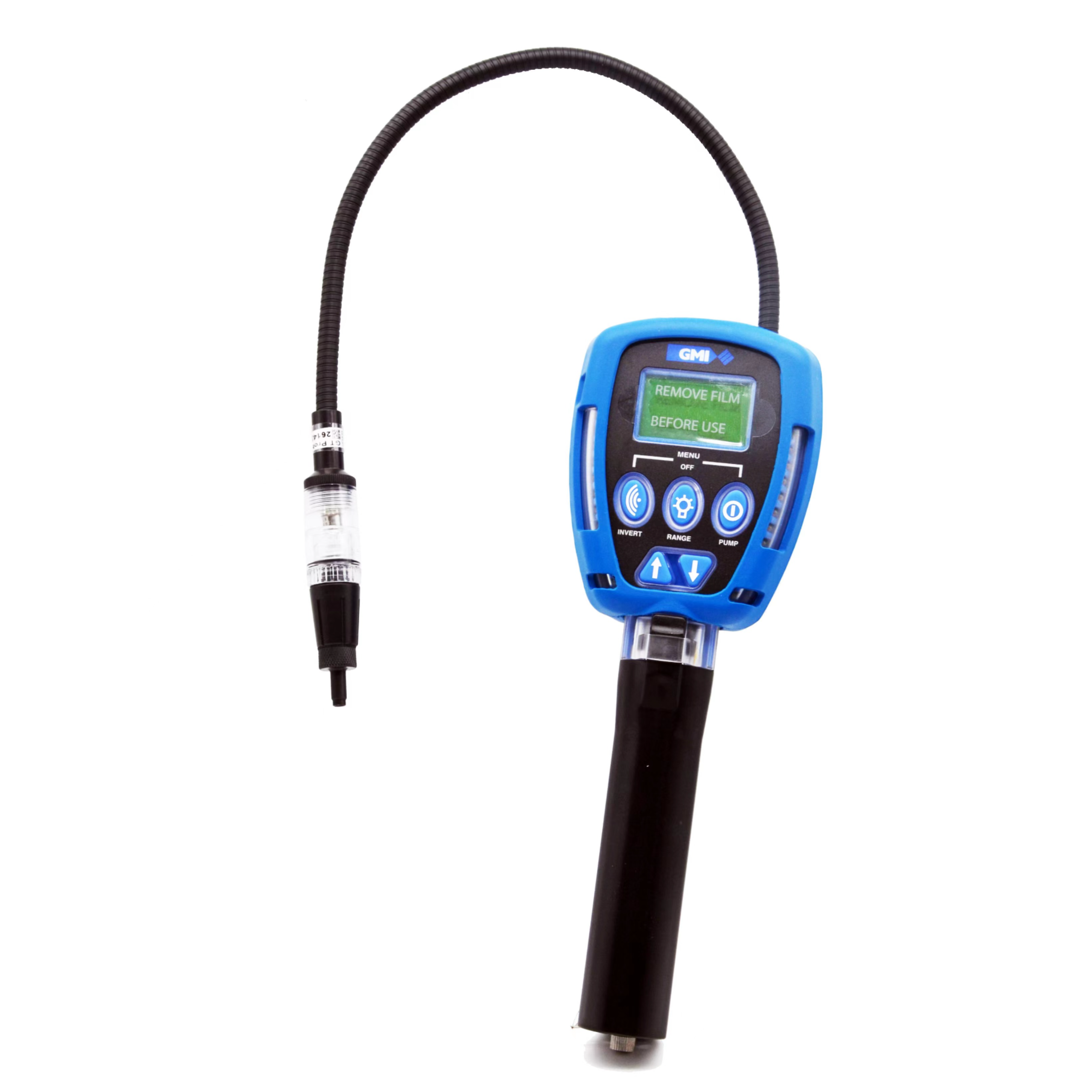
 咨询
咨询